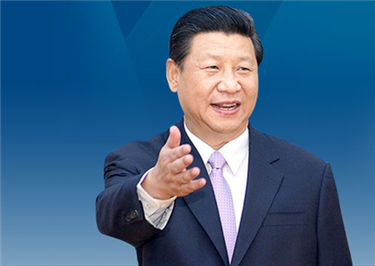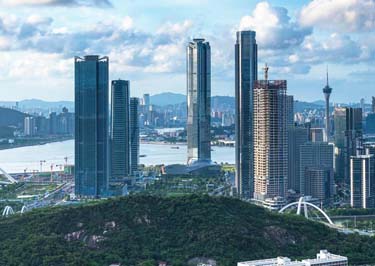Doumen Village: Cowboy King, ancestors venerated
Doumen Village in the town and district of the same name is home to century-old folk architecture and unique customs that are revered in concert with the ongoing modernization of Zhuhai.
It's rather secluded. Located east of Doumen Town and 581 m northwest of Huangyang Mt, the village is 1.5 km (almost a mile) from the town government center. Facing the Hutiaomen Waterway with three sides surrounded by hills, it is shaped like a dredging box (dou in pinyin) and thus got its name Doumen.
And, there are not many streets. Huangyang and Doumen avenues pass through the village on one side while Wenquan (hot springs) Lvyou (Travel) Avenue runs in front.
Liking the spot, village founder Kwong (Kuang) Juchuang relocated his family clan from Gubolipan Village, today's Shuikou Village in Kaiping of Jiangmen City, in 1430 during the Ming Dynasty (1368-1644). Therefore, the major surname of the villagers is Kwong, and the dialect is Cantonese.
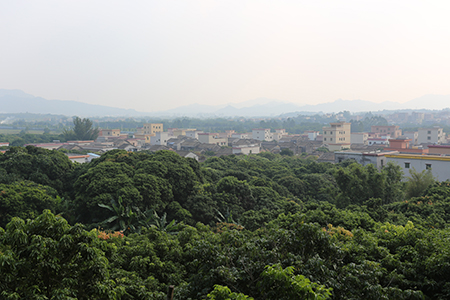
Doumen Village
Although the current population is 800, another hundred or so natives each are living in Hong Kong, Macao, and overseas, mainly in the US and Philippines.
Guangfu dwellings
Today, 56 Guangfu dwellings, which are of Lingnan (Cantonese) architecture and noted for ventilation befitting a hot and humid climate, remain. Most typical is the primarily well-preserved 30 Lane 4, a 110-sq-m structure built during the reigning year of Emperor Hsien-feng (Xianfeng) (17 July 1831-22 August 1861) in the Qing Dynasty (1644-1912).
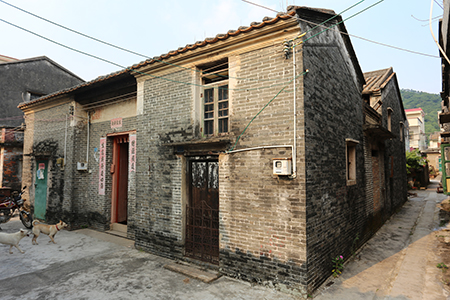
30 Lane 4 [Photo by Sanzao Town Cultural Station in Nov 2015]
Two family shrines -- Kwong (Kuang) Juchuang and Kwong Puqi -- have withstood ups and downs over the years. The Juchuang, covering 380 sq m with temporary memorial tablets for the village founder of that given name and other ancestors, was first built in 1635 during the Ming Dynasty and reconstructed in 1992. The Puqi, covering 100 sq m, was built in 1968 and now serves as the Center for the Aged.
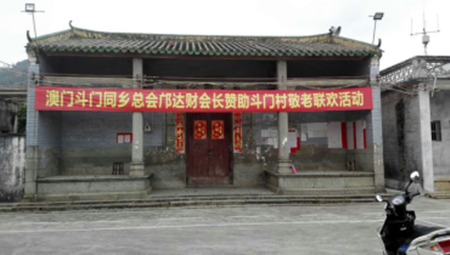
Kwong (Kuang) Juchuang Family Shrine [Photo by Sanzao Town Cultural Station in Nov 2016]
Annual ancestor worship at the Double Ninth (Chung Yeung) Festival on the 9th day of the 9th lunar month is a major clan ritual. A thousand relatives gather at neighboring Xiaohaochong Village to honor their ancestors and inspire their descendants.
Longgui Temple
Longgui (Dragon Return) Temple, first built in 1136 during the Song Dynasty (960-1279) and reconstructed in 2002, enshrines a Buddhist monk named Huang Lan. The monk passed away while sitting leg-crossed at the foot of Huangyang Mt in the Song Dynasty (960-1279). Also worshipped are Ksitigarbha Bodhisattva and the legendary Cowboy King who used to be a magical cowboy in the neighborhood and later became an immortal ascending to heaven from atop a rock.
At the beginning and end of each year, or during droughts or plaques, residents parade through the village carrying a sculpture of Cowboy King, praying for good weather for the crops, safety for the people, and a bumper grain harvest.
On Cowboy King's birthday, which falls on the 8th day of the 4th lunar month, natives offer wormwood cakes, paederia scandens cakes, pork-sticky rice dumplings, and other sacrifices to the god for blessings.
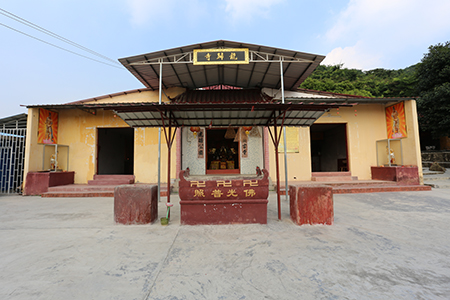
Longgui Temple [Photo by Sanzao Town Cultural Station in Nov 2016]
'Birthday' celebrations
The folk custom "Celebration for a newborn's one-month birthday," which came into being and prevailed in the late Qing and Early Republic of China period, is the most ceremonious of all maternity rituals. Elders name the baby, who would be dressed up to worship the ancestors. Most solemn, however, is a baby boy as the first child. He would be taken to a village temple or family shrine for an ancestral sacrifice at which cooking oil would be used to light a lamp (tian deng in pinyin, coincidental with "tian ding," meaning having a boy born to the family).
"Holing a 10-year birthday party," the folk custom gained popularity almost in the same period. On the 30th birthday of a man, a mother-in-law sends congratulations along with a pair of pants. Meanwhile, a hearty feast will be prepared for the guests.
On the other hand, the next birthday after a woman gets married is called Rebirth Day, on which her mother provides pork and chicken as sacrifice to the ancestors of her son-in-law.
Furthermore, on the 60th or 70th birthdays, a grand family reunion feast is held, and relatives come up to congratulate the honored one with home-made cakes and peach-colored bread-rolls.

